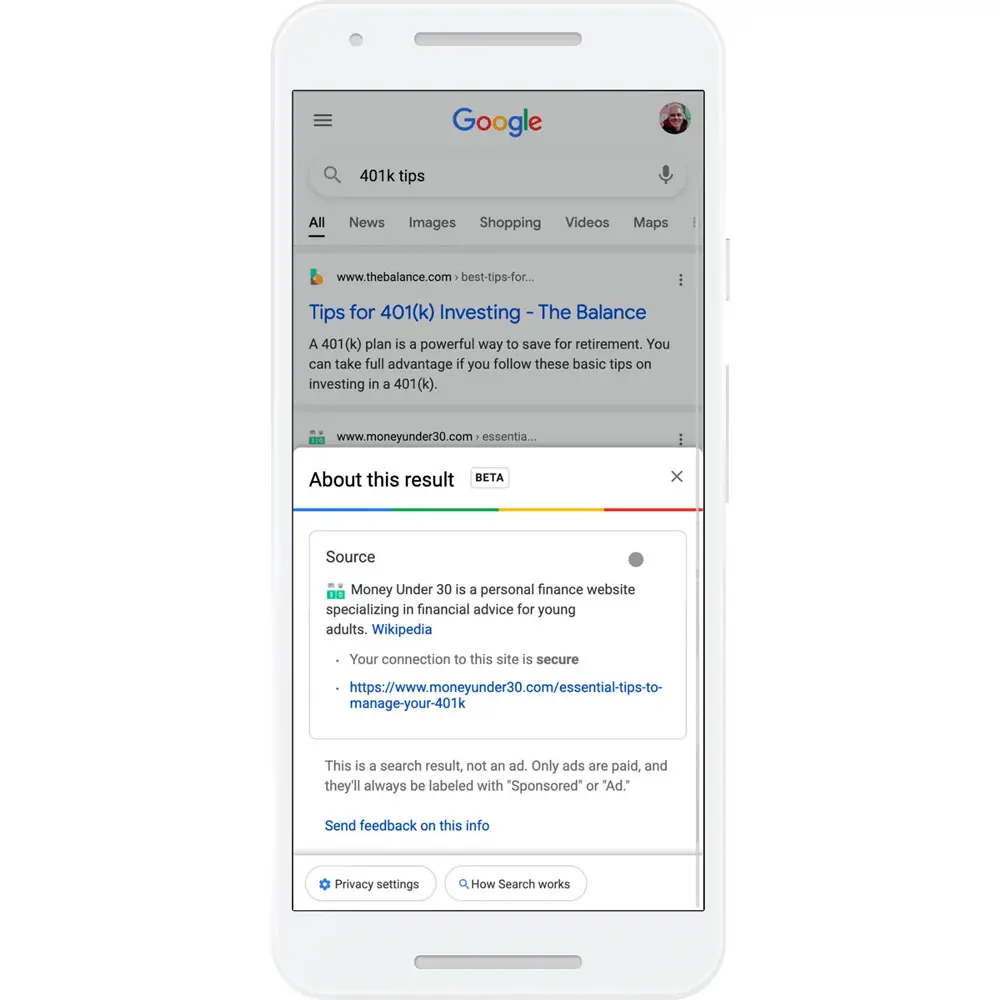Google has started testing a feature that provides information about search results – letting users get more context about them.
Searching on Google doesn’t always bring up results from sites you’re already familiar with, and it’s a hassle to make extra searches just try to find out more about them. Now, Google is working on a new way to help you get helpful information without having to do background checks on your search results.
As of this week, Google will start displaying a new menu icon that you can tap to find out more about the result – and what site the information is coming from. The additional context will help you make better and “more informed” decisions about the sites you choose to get your information from.
Related | Google Docs Now Shows You Out Of Office Information When Replying To Or Mentioning Someone
The context comes from Wikipedia, in very much the same way that Facebook provides information about the companies behind posts you might see on your news feed.
The feature uses Wikipedia’s open editing model, relying on volunteers around the world to add content, and the descriptions are meant to provide “the most up-to-date verified and sourced information available on Wikipedia.”

If you haven’t already visited a site, you will be able to decide if that’s something you really want to do when reading the additional information about it.
So, what happens when a website doesn’t have a Wikipedia description? Google will show you some additional context that it might have – for example, an indication as to when Google was first able to index the site.

The context panel will also be available for other information, like job listings or local business listings, and lets you know if a site uses the secure HTTPS protocol, encrypting all the data between the website and your browser.
It will be rolling out this week in English in the U.S. on desktop, mobile web, and the Google App on Android.
